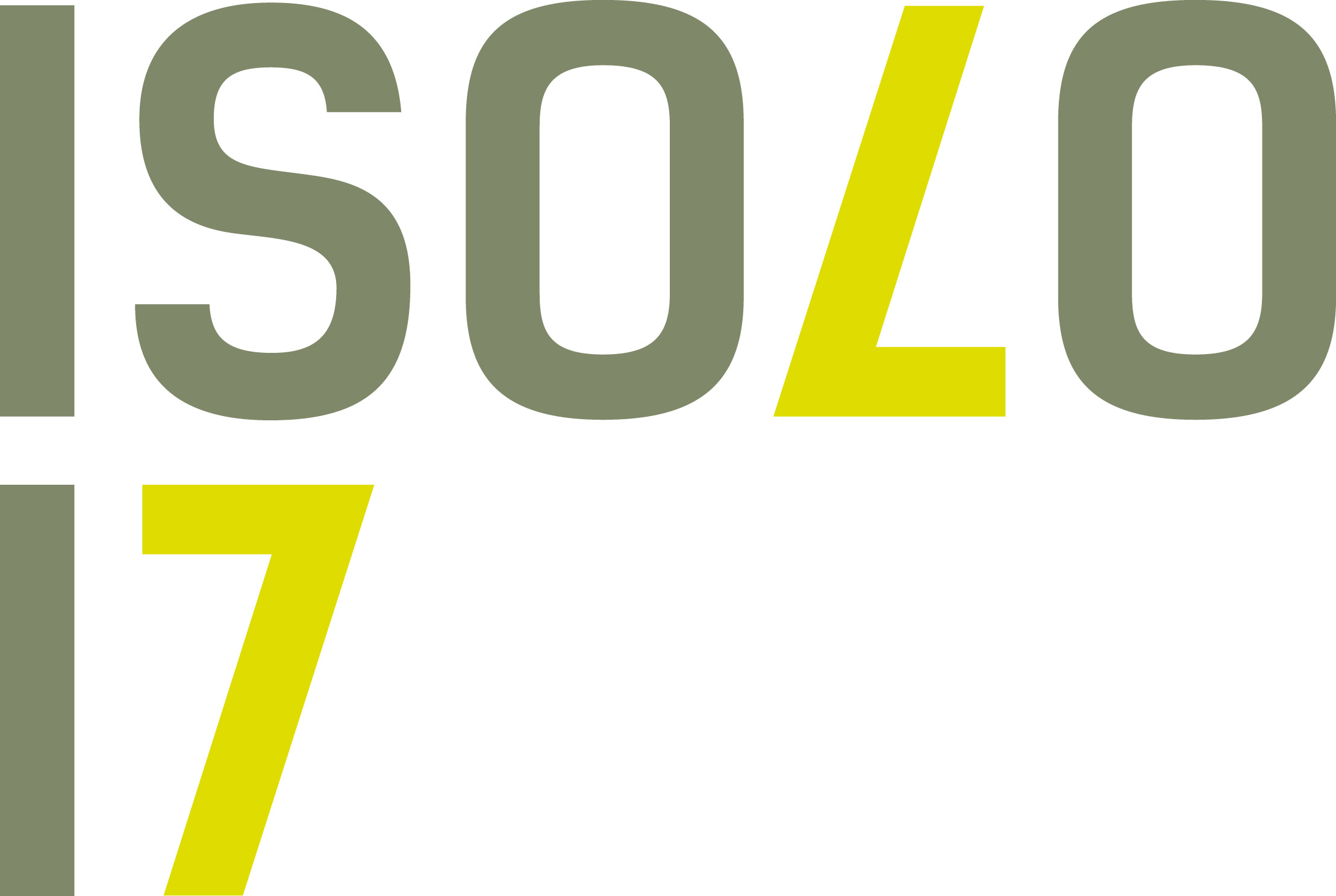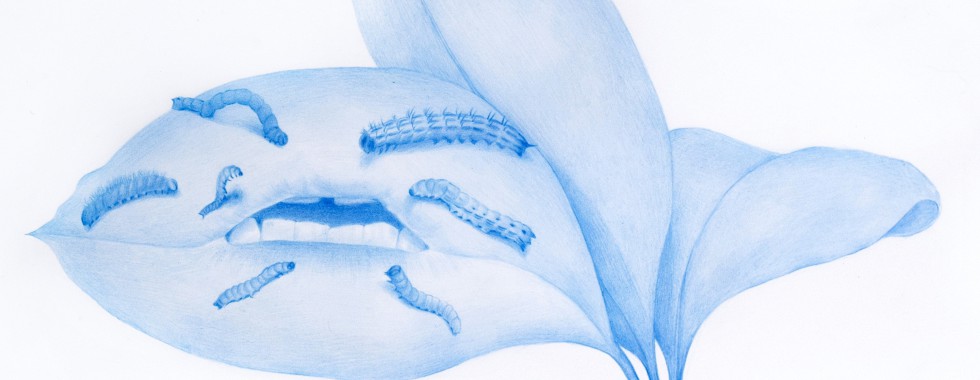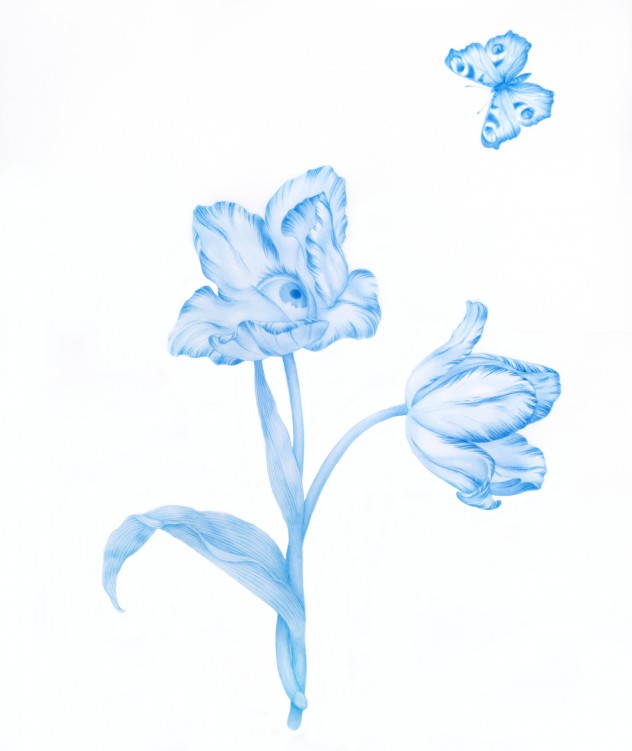Corpus Plantarum di Zachari Logan
Dal 11 Maggio al 12 Giugno. Seconda mostra personale in Italia, Isolo17 Gallery.
E se l’uomo riuscisse a imitare la Natura fino ad arrivare a fondersi con essa? E se fosse in grado di carpirne ogni suo segreto, giungendo a prendere il suo posto sulla Terra? E se fosse questa l’unica opzione che egli ha a disposizione per garantirsi un primato nella lotta per la sopravvivenza? Le inquiete visioni di Zachari Logan (Saskatoon, Canada, 1980) ci portano a interrogarci sull’indole dell’uomo contemporaneo, sul suo rapportarsi alla nuova natura che lo circonda, una realtà che egli stesso ha contribuito a creare e che oggi si mostra sempre più aliena e imprevedibile. Un rapporto che passa di fase in fase e si evolve tra convivenza, ammirazione, sopraffazione, usurpazione. Demiurgo imperfetto, l’uomo ha costruito nel tempo un habitat a sua immagine e somiglianza, imitando la natura e giungendo a erigere un sovramondo, antagonista e spietato nei confronti delle altre specie viventi. Ed è in questo processo di emulazione che è successo qualcosa. La specie umana ha fatto un salto evolutivo imprevisto.
Corpus Plantarum è un racconto distonico, una narrazione in cui Zachari Logan porta alle estreme conseguenze la rivalità tra uomo e natura. Nell’eterna lotta per la conservazione della specie, l’essere umano sfodera il suo colpo finale, la mutazione del proprio corpo in una entità espansa, che si riflette e si confonde con la natura stessa. Dallo studio e dall’osservazione delle leggi ambientali, egli ha appreso i segreti della metamorfosi, del sapersi confondere con le altre specie, trasformandosi in una trappola mortale per le creature che si imbattono in lui. Questo nuovo uomo–natura è per Logan monito a una ricongiunzione errata alla Terra e alle sue regole. È una figura perturbatrice, che ha il potenziale per trasformare la realtà di volta in volta in estasi o in tormento. Ortaggi comuni, piccoli insetti, arbusti ed erbe officinali nascondono elementi inquietanti come piccole bocche, braccia, occhi che ci fissano e ci scrutano in attesa di sferrare l’attacco letale. Siamo abituati a conoscere una realtà divisa tra naturalia e artificialia, in ciò che esiste di per sé e quanto invece è stato sapientemente creato dagli esseri umani. A queste due categorie, Zachari Logan ne aggiunge una terza, quella dei variabilia, dell’elemento metamorfico, in cui naturalia e artificialia si mescolano e danno vita a qualcosa di nuovo e totalmente imprevedibile.
Corpus plantarum è un regesto di questa mutazione, per la quale l’artista canadese si comporta come un perfetto studioso umanista avrebbe fatto. Logan analizza e descrive ogni specie che incontra; la disegna e la classifica redigendo il suo personale erbario. La serie dei Wildflowers (2016 – 2017) ci proietta in un eden orrorifico sfoggiando mostruosità che richiamano alla mente le aberrazioni infernali che popolano le visioni di Bosch, così come le esaltazioni oniriche di Redon e di tutto l’immaginario simbolista. La raffinatezza e la perfezione della tecnica raggiunta da Logan in questi disegni dialoga con quella a cui ci ha abituato la tradizione fiamminga, omaggiata anche nella scelta di un monocromatismo rigoroso, di quel blu che ricorda le ceramiche prodotte in Olanda a partire dalla metà del Seicento.
Ma la natura, quella vera, non resta un’osservatrice passiva. Essa emerge e si erge dalle pareti dove è stata confinata (Grotto, 2017) diffondendosi nello spazio, rendendosi manifesta e aggressiva. La sua minaccia è letale e il candore funereo dei fiori che la adornano ce lo ricorda.
Nell’ultima parte del suo viaggio, Logan esplora questo uomo-natura dal suo interno. Il pastello blu è sostituito dal rosso intenso. Capillaries, Roots, Organism, Skin Gardens (2017): nei titoli delle opere esposte troviamo le chiavi di lettura per decifrare queste nuove immagini. Fiori, radici e foglie sono le immagini simboliche che ci svelano come funziona questo nuovo organismo, nella sua forza e nelle sue debolezze. È il principio medievale della signatura rerum, della assonanza eidetica tra organo umano e nutriente vegetale che ne diventa principio curativo, la regola del similia similibus curantur. E sempre con un preciso riferimento alla tradizione medica medievale, la corruzione fisica e la malattia (Malady, 2017) è rappresentata come un animale che Logan identifica in una larva o in un lepidottero – animale simbolo della metamorfosi – che nasce e si nutre del corpo umano. Perché questo nuovo essere, questo uomo-natura, è e resta comunque umano. E come tale è fragile e vulnerabile. E su di lui la natura avrà sempre il sopravvento, qualsiasi strategia di difesa egli sceglierà di adottare.
A cura di Leonardo Regano
http://www.exibart.com/notizia.asp?IDNotizia=53631&IDCategoria=1
What if Man could imitate Nature to the point of blending with it? What if he were to succeed in understanding each of its secrets, going so far as to take its place on earth? And if this were the only option available to guarantee first place in the battle for survival? The disturbing visions of Zachari Logan (Saskatoon, Canada 1980) drive us to query the temperament of contemporary man concerning how he relates to the “new nature” which surrounds him, a reality which he himself has played a part in creating, and which today is shown to be ever more alien and unpredictable. It is a relationship passing, from one phase to the next, evolving among cohabitation, admiration, subjugation, appropriation. An imperfect deity, Man has built a habitat in his own image and likeness, imitating Nature and going so far as to erect an “overworld”, antagonistic and ruthless towards other living species. And it is in this process of rivalry that something has happened. The human species has made an unforeseen evolutionary leap.
Corpus Plantarum is a jarring tale, a story in which Zachari Logan depicts the extreme consequences of the competition between Man and Nature. In the everlasting battle for the conservation of the species, the human being deals the final blow, with the mutation of his own body into an exuberant entity which mirrors and blends with Nature’s. From studies and observations of environmental laws, Man has learnt the secrets of metamorphosis, and how to intermingle with the other species, transforming himself into a mortal trap for the creatures that encounter him.
This new Man-Nature is for Logan a warning regarding a mistaken connection to the Earth and to its rules. It is a disquieting picture which has the potential of continually changing reality into ecstasy, or torment. Ordinary vegetables, small insects, shrubs and medicinal herbs hide disturbing features such as small mouths, arms, eyes which stare and inspect us, lying in lethal ambush. We are used to recognizing a reality divided between naturalia and artificialia, in that which exists in itself and on the other hand that which has been knowingly and skilfully created by humans. to these two categories Logan adds a third, that of variabilia, a metamorphic element in which naturalia and artificialia merge: Corpus Plantarum is a documented summary of that mutation, for which the Canadian artist acts as the perfect humanist scholar would have done. Logan analyzes and describes each species that he meets, draws and classifies it, editing his own private erbario.
The series Wildflowers (2016-2017) throws us into a horrific Eden, flaunting monstrosities that recall the hellish aberrations which inhabit Bosch’s visions, a well as Reden’s dreamlike exaltations, and all of the Symbolist fantasies. The technical refinement and perfection reached by Logan in these pictures converse with that which characterizes the Flemish tradition, honoured as well by the choice of rigorously monochromatic colours, recalling the pottery made in Holland from the mid-seventeenth century. But nature, when real, does not remain a passive observer. It emerges and rises up from the walls where it has been enclosed (Grotto, 2017), spreading out into space, aggressively revealing itself. It’s threat is lethal, and the funereal purity of the flowers remind us of this.
In the last part of his journey, Logan explores this Man-Nature from within. In place of pastel blue is intense red. Capillaries, Roots, Organism, Skin Gardens (2017). In the titles of the works displayed we find the key for deciphering these new concepts. Flowers, roots and leaves are the symbolic images revealing how this new organism operates, in its strengths and in its weakness. It is the medieval precept of signatura rerum, of the eidetic assonance between human organ and nourishing plant that becomes the healing principle, the rule of similia similibus curantur. There is always a precise reference to the medieval medical traditions: physical decay and illness (Malady, 2017) is represented by an animal Logan identifies as larva or an insect – symbol of metamorphosis – which is born and fed from the human body. Because, despite all, this new being, this Man-Nature, is and will remain human. And as such is fragile and vulnerable. And on him Nature will always prevail, regardless of the defence strategy he chooses to adopt.
Leonardo Regano
Giovanni Monzon
Isolo17 Gallery
Via XX Settembre 31/b
37129 Verona
cel. 349 3746379
www.isolo17.gallery


